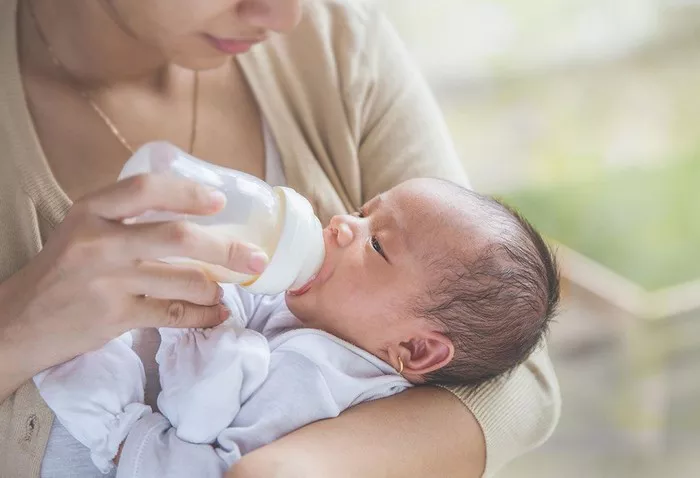Breastfeeding is a natural and essential aspect of early infant care, providing numerous benefits for both mother and baby. However, many breastfeeding mothers may wonder about the effects of alcohol consumption on their breast milk and their baby’s health. Understanding how much alcohol passes into breast milk, its implications, and safe guidelines is crucial for informed decision-making and ensuring the well-being of both mother and child.
Explanation of Alcohol Transfer
When a breastfeeding mother consumes alcohol, a portion of it enters her bloodstream through the digestive system. As alcohol circulates in the bloodstream, it can also pass into breast milk. The concentration of alcohol in breast milk typically parallels the level of alcohol in the mother’s blood. Alcohol is not stored in breast milk but moves freely into and out of it as it does with the bloodstream.
The correlation between alcohol consumption and blood alcohol levels is influenced by several factors, including the mother’s weight, the amount and type of alcohol consumed, and the time elapsed since drinking. Generally, the concentration of alcohol in breast milk peaks approximately 30 to 60 minutes after consumption but may vary depending on individual factors.
Safe Limits
Moderate alcohol consumption is generally considered safe for breastfeeding mothers. The American Academy of Pediatrics (AAP) suggests that breastfeeding mothers can consume alcohol in moderation without needing to pump and dump their breast milk. Moderate alcohol consumption is defined as one standard drink per day, which is equivalent to 12 ounces of beer, 5 ounces of wine, or 1.5 ounces of distilled spirits.
It’s important to note that alcohol metabolism varies among individuals, and factors such as body weight, tolerance, and overall health can affect how alcohol is processed in the body. Breastfeeding mothers should be mindful of their alcohol intake and adhere to safe limits to minimize potential risks to their infants.
Timing for Breastfeeding Post-Consumption
Timing is crucial when it comes to breastfeeding after consuming alcohol. To minimize the amount of alcohol in breast milk, breastfeeding mothers can wait approximately 2 to 3 hours per standard drink before nursing their infant. Waiting allows time for the body to metabolize and eliminate the alcohol from the bloodstream, reducing the concentration in breast milk.
If a mother consumes more than one standard drink, she should wait longer before breastfeeding to ensure that alcohol levels in her bloodstream and breast milk have sufficiently decreased. Pumping and discarding breast milk during this time period is unnecessary, as alcohol clears from breast milk as it does from the bloodstream.
Effects on Infants
While moderate alcohol consumption by breastfeeding mothers is generally considered safe, excessive alcohol intake can have adverse effects on infants. High levels of alcohol in breast milk can impair a baby’s motor skills, coordination, and sleep patterns. Additionally, infants may consume less breast milk or have difficulty breastfeeding if their mother has recently consumed alcohol.
Long-term effects of alcohol exposure through breast milk on infant development are not well understood. However, prolonged exposure to high levels of alcohol may pose risks to a baby’s cognitive and behavioral development. It’s important for breastfeeding mothers to be mindful of their alcohol intake and prioritize their infant’s health and well-being.
Alcohol Clearance from Breast Milk
The clearance of alcohol from breast milk follows a similar pattern to its elimination from the bloodstream. As the body metabolizes alcohol, its concentration in breast milk gradually decreases over time. Factors such as the mother’s metabolism rate, hydration level, and liver function influence how quickly alcohol is cleared from breast milk.
On average, it takes approximately 2 to 3 hours for a standard drink to be eliminated from breast milk after consumption. However, this timeframe may vary depending on individual factors and the amount of alcohol consumed. Breastfeeding mothers can monitor their alcohol intake and plan breastfeeding sessions accordingly to minimize alcohol exposure to their infants.
Factors Influencing Alcohol Presence
Several factors can influence the duration and concentration of alcohol in breast milk:
1. Amount Consumed: The more alcohol a mother consumes, the longer it takes for her body to metabolize and eliminate it from breast milk.
2. Mother’s Weight: Alcohol metabolism is influenced by body weight, with larger individuals typically metabolizing alcohol more efficiently.
3. Time Elapsed Since Consumption: The longer the time between alcohol consumption and breastfeeding, the lower the concentration of alcohol in breast milk.
4. Liver Function: The liver plays a crucial role in metabolizing alcohol, and factors such as liver health and enzyme activity can affect alcohol clearance rates.
5. Hydration Level: Staying hydrated can help facilitate the elimination of alcohol from the body and breast milk.
Breastfeeding mothers should be aware of these factors and make informed decisions about alcohol consumption to minimize potential risks to their infants.
Health Recommendations
For breastfeeding mothers, prioritizing their health and the well-being of their infants is paramount. Here are some health recommendations:
1. Know Your Limits: Understand what constitutes moderate alcohol consumption and adhere to safe guidelines.
2. Plan Ahead: If you plan to consume alcohol, consider pumping and storing breast milk beforehand or timing your drinks to minimize exposure to your infant.
3. Stay Informed: Keep abreast of current guidelines and recommendations regarding alcohol consumption during breastfeeding.
4. Seek Support: If you have concerns or questions about alcohol and breastfeeding, consult with a healthcare professional or lactation consultant for guidance and support.
5. Stay Hydrated: Drinking plenty of water can help flush alcohol from your system more quickly.
It’s essential for breastfeeding mothers to make informed choices about alcohol consumption and prioritize their infant’s health and well-being. By understanding the factors influencing alcohol transfer to breast milk and following safe guidelines, mothers can confidently navigate breastfeeding while enjoying occasional drinks responsibly.
For further reading and support, resources such as the American Academy of Pediatrics, La Leche League International, and lactation consultants can provide valuable information and assistance tailored to breastfeeding mothers’ needs.


